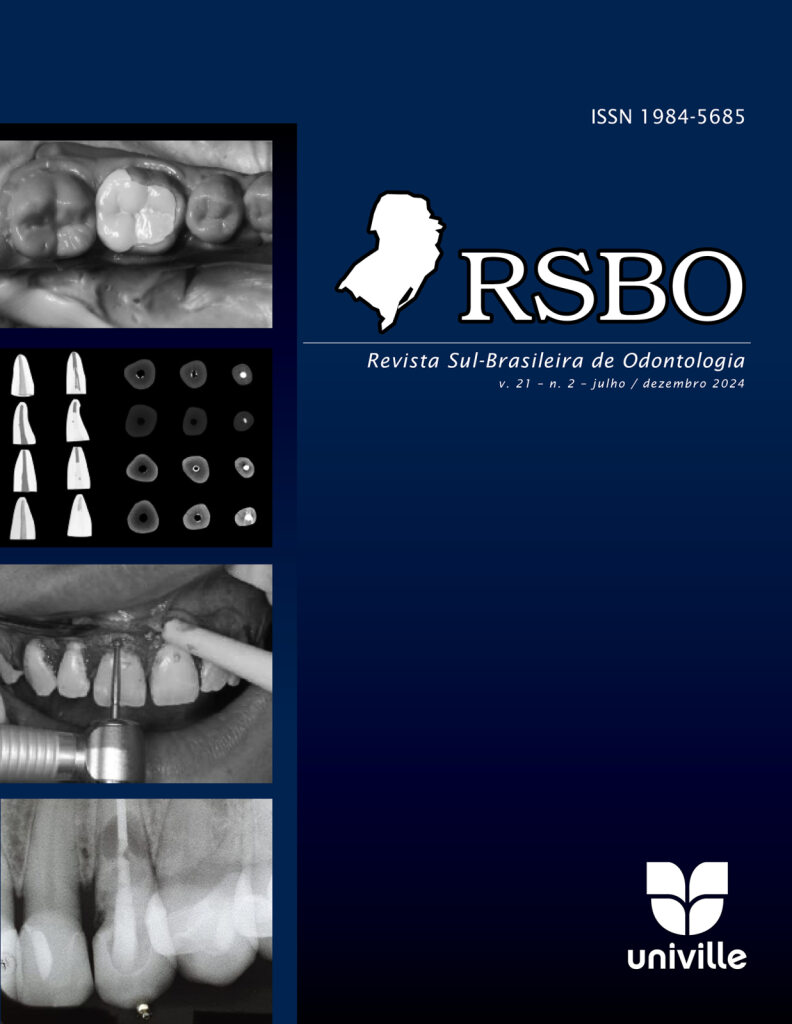Use of chameleon composite resins in Dentistry: case report
DOI:
https://doi.org/10.21726/rsbo.v21i2.2540Palavras-chave:
composite resin; case report; non carious cervical lesion.Resumo
Non-carious cervical lesion (NCCL) is characterized as wear in the cervical region of the tooth, not caused by caries, which can directly affect quality of life. Therefore, its treatment is essential, as the main symptom is pain. One of the forms of treatment for this type of injury is restoration with composite resins. Aiming at greater ease in choosing the color, the chameleon resin was proposed, not having color variations like conventional resins, containing only one color. This resin has the ability to copy the color of the substrate that is inserted. Objective: Is to report a clinical case of a female patient, where chameleon resin was used in LCNC. Case report: Patient J. P., female, 31 years old, attended the dental clinic of Universidade Tuiuti do Paraná, complaining of tooth sensitivity and diagnosis of bruxism. Anamnesis was performed and it was observed that there were LCNC in several teeth. For the treatment of sensitivity, the option was to perform restorations with composite resin. Resins from different brands were used: Vittra Unique by FGM® Admira Fusion X-tra by Voco® and Vittra Unique Flow by FGM®. Relative isolation was performed with a retractor wire. After the selective acid etching, it was washed and dried for application of the universal adhesive Futurabond U by Voco® and afterwards, light curing with the Bluephase N Light Cure by Ivocla Vivadent®. Then, restoration was performed with chameleon resin and photopolymerization of the reconstructed region. After finishing the restorations, finishing and polishing began. Results: After completing the procedure, the patient reported greater satisfaction with the aesthetics and no pain. Conclusion: The monochromatic composite resin is an excellent choice of restorative therapy for this type of injury.

